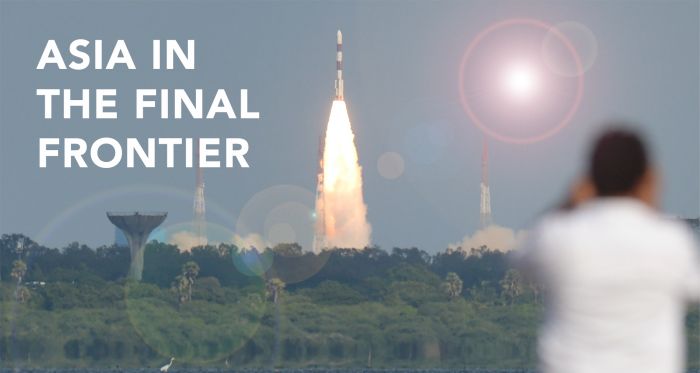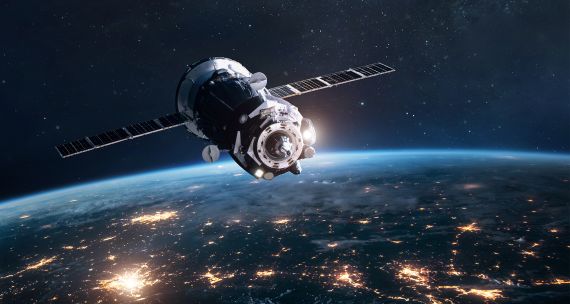In 2023, India became the first country to land on the coveted lunar south pole, and in January 2024, it became the first Asian country to successfully place a probe in the sun’s orbit. Although India's space program began in the late 1960s, these recent milestones, along with its expanding current and planned activities, have elevated India to one of the leading spacefaring nations, alongside the U.S., China, and Russia. These achievements are paving the way for India to fulfil its ambition of becoming a major space power.
India’s space ambitions are not merely technological showcases of its self-reliance; they are deeply intertwined with the country’s socio-economic goals, defence strategies, and geopolitical aspirations. Advances in satellite development have directly contributed to critical national needs, such as disaster management, agriculture, climate monitoring, and telecommunications. At the same time, India's focus on affordable and innovative space solutions has created commercial opportunities, leading to international collaborations and partnerships with other countries and private space companies. India has built a successful national space program while spending a fraction of what other leading space powers do.
In recent years, India’s space program has gained strategic importance amid the growing global competition in space exploration between the United States and China, as well as India’s own rivalry with China. With the establishment of the Indian National Space Promotion and Authorization Center (IN-SPACe) and efforts to incentivize its commercial space sector, India is poised to foster a robust space economy that balances commercial opportunities with national security priorities.
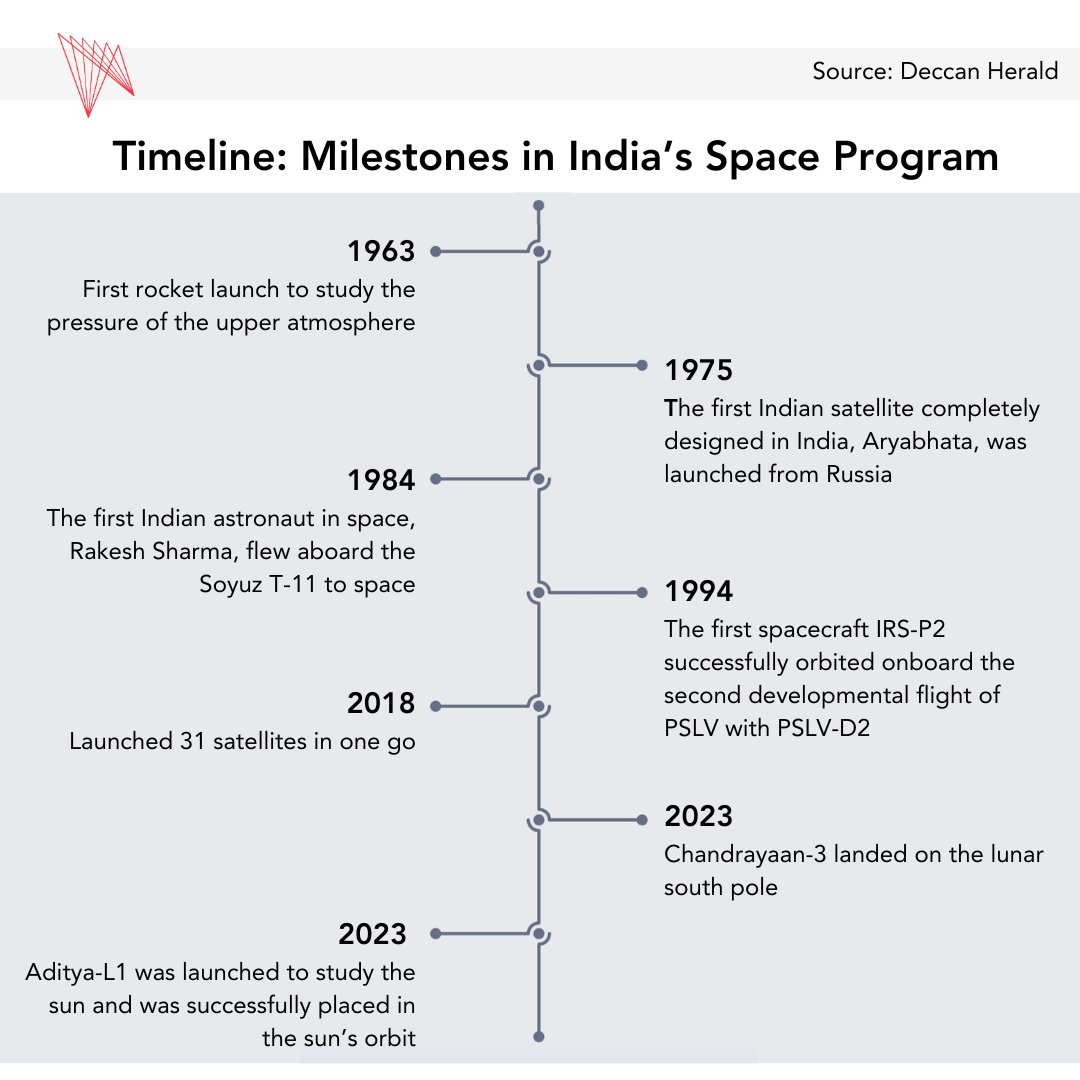
India's space journey began in 1969 with the establishment of the Indian Space Research Organization (ISRO) as an independent agency for space research. Three years later, ISRO was brought under the Department of Space (DoS), placing the space program directly under the Prime Minister’s Office. Since then, India has developed a successful national space program and a thriving commercial space industry, achieving significant advancements in satellite technology, lunar missions, and Mars exploration.
Satellite technology
Over the years, India’s space program has been rooted in self-reliance, with a focus on developing launch vehicles, satellites, and other technologies domestically. In its early stages, ISRO collaborated with other countries to launch its satellites, gaining valuable experience and expertise. India’s first satellite, the Aryabhata, was launched by the Soviet Union in 1975 and used to conduct experiments on astronomy and physics. India continued developing satellites, mainly for Earth observation and communication, and by the 1980s and 1990s, had developed its own launch capacity. The development of the Polar Satellite Launch Vehicle in the 1990s allowed India to place some of its satellites into orbit.
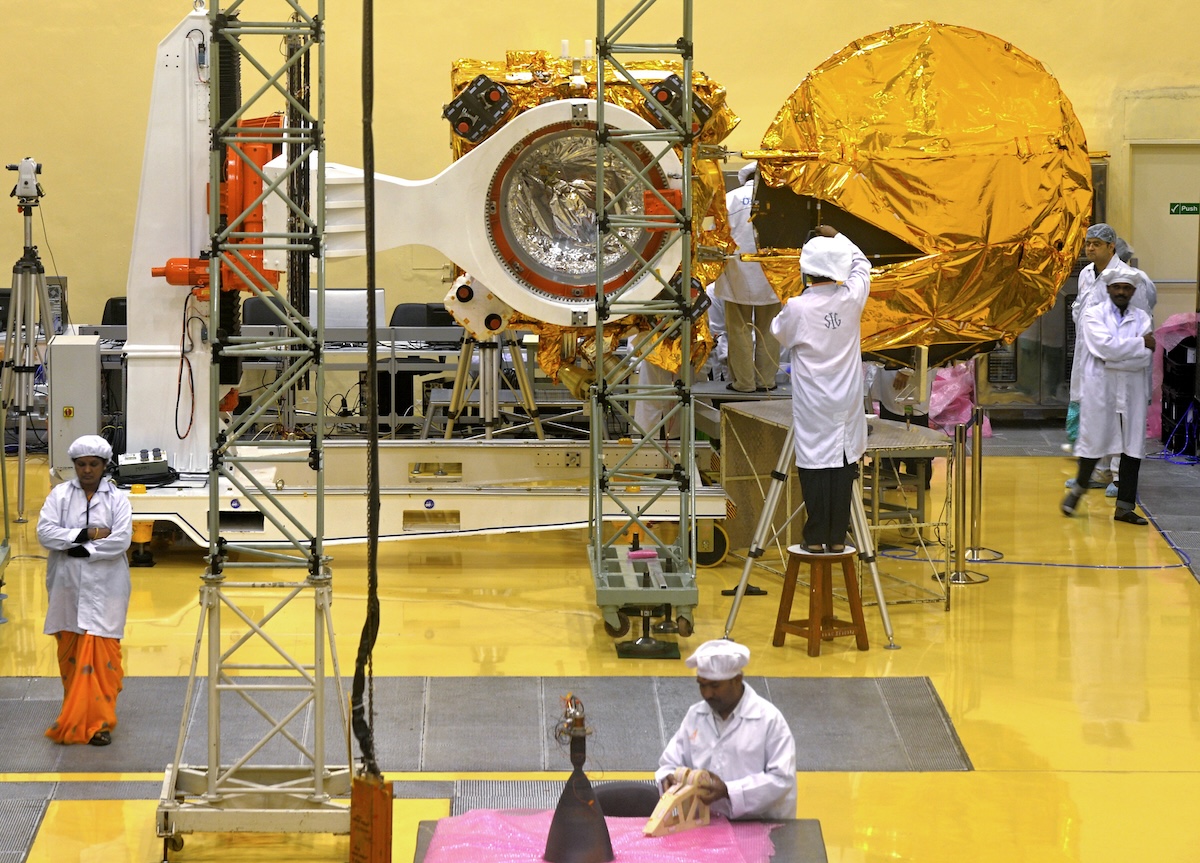
One of its most significant recent achievements has been the deployment of a series of remote sensing satellites between 2013 and 2016, forming the Navigation with Indian Constellation (NavIC) System, which provides India with an alternative to the U.S. Global Positioning System (GPS). These satellites, which form the largest constellation of their kind, have proven crucial in fisheries management, telemedicine, mineral exploration, disaster management, and urban planning. This system has bolstered India's autonomous navigation capabilities, providing precise positioning services over India and up to 1,500 km from its borders. In June 2023, India launched the first of five second-generation satellites, creating NavIC 2.0, which will upgrade the current suite of aging satellites and improve surveillance and communication.
Lunar and Interplanetary missions
India has also been active in the cislunar space (the region between the Earth’s orbit and the moon) and lunar exploration. India’s first mission to the moon, the Chandrayaan-1 2008 mission, made significant scientific discoveries, including the detection of water molecules on the moon's surface. Building on its success, India launched Chandrayaan-2 in 2019, aiming to explore the lunar south pole. While the lander lost communication during its descent, the orbiter continued to operate successfully, conducting scientific observations and providing valuable data. Chandrayaan-3, launched in July 2023, successfully reached the moon’s south pole a few weeks later – making India the fourth country to land on the moon and the first to land on its south pole. This is of particular interest as the south pole is believed to contain water, which would facilitate the establishment of a future lunar space station. Russia’s Luna-25, launched around the same time, would have landed on the south pole first had it not crashed from orbit – an indication of the decline of the former space superpower and the rise of a more nascent one.
In the same year, India’s successful Mars orbiter mission, Mangalyaan, marked a historic milestone, as it made India the first Asian nation to reach Mars’ orbit and the fourth space agency globally to do so, behind Russia, the U.S. and the EU. The mission demonstrated ISRO's technical competence and cost-effectiveness, garnering international recognition. Mangalyaan was estimated to cost about C$98 million, while the U.S. NASA’s MAVEN Mars orbiter, launched the same year, was estimated at almost ten times that cost, at C$890 million.
Crewed spaceflight
The planned crewed mission, Gaganyaan, highlights India's ambitious plan to send astronauts into Earth’s orbit. Scheduled by 2025, the Gaganyaan mission, if successful, will assist India in meeting its target of a crewed mission to the moon by 2030. The mission holds immense significance for India's space ambitions and would again highlight its technological capabilities. A substantial portion of India’s national space budget is directed towards the Ganganyaan mission as well as the continued development of the country’s indigenous launch vehicle capabilities. By achieving these milestones, India will join an exclusive club of countries—the U.S., Russia, and China—that have conducted crewed space missions. This could significantly elevate India's standing on the global stage, especially in the context of international space co-operation and competition. In the broader strategic context, Gaganyaan could enhance India's geopolitical clout, as space exploration increasingly intersects with national security, economic interests, and international diplomacy. The mission aligns with India's long-term vision of establishing a robust presence in space, potentially supporting future lunar exploration, asteroid mining, and deep-space missions.
India’s National Space Strategy
India’s 2023 National Space Strategy focuses on five areas: the encouragement of research and development to support its space program; the provision of public goods and services via the use of space technologies for national priorities; the creation of a regulatory framework to encourage non-state actors through IN-SPACe; the promotion of space-related education and innovation; and the use of space to increase awareness of space activities. The inclusion of its commercial industry is a key component of the strategy.
India has also been actively working on establishing a comprehensive legal framework to regulate and promote space activities within the country. The Space Activities Bill is a significant legislative initiative aimed at governing both governmental and private sector activities in space. Its primary objectives are to regulate space activities, encourage private sector participation, ensure compliance with international law, and set the standards for liability and safety for orbital objects.
IN-SPACe, an autonomous body established in 2020 under the DoS, likewise has been mandated to promote the growth of the commercial space sector. It has streamlined licensing processes for all space activities, facilitated access to ISRO’s space launch sites to encourage private satellite launches, and developed a supportive ecosystem to support the industry through incubation centres and research facilities.
To support its space strategy, India has doubled its space budget over the past decade to C$2 billion, balancing the development of a self-reliant domestic space industry with the expansion of its diplomatic ties. Its 2024 budget, which increases its allocation to the Department of Space by four per cent from the previous year, reflects a strong commitment to advancing its outer space ambitions, allocating significant resources to bolster its space program and foster innovation in the sector.
A booming commercial space sector
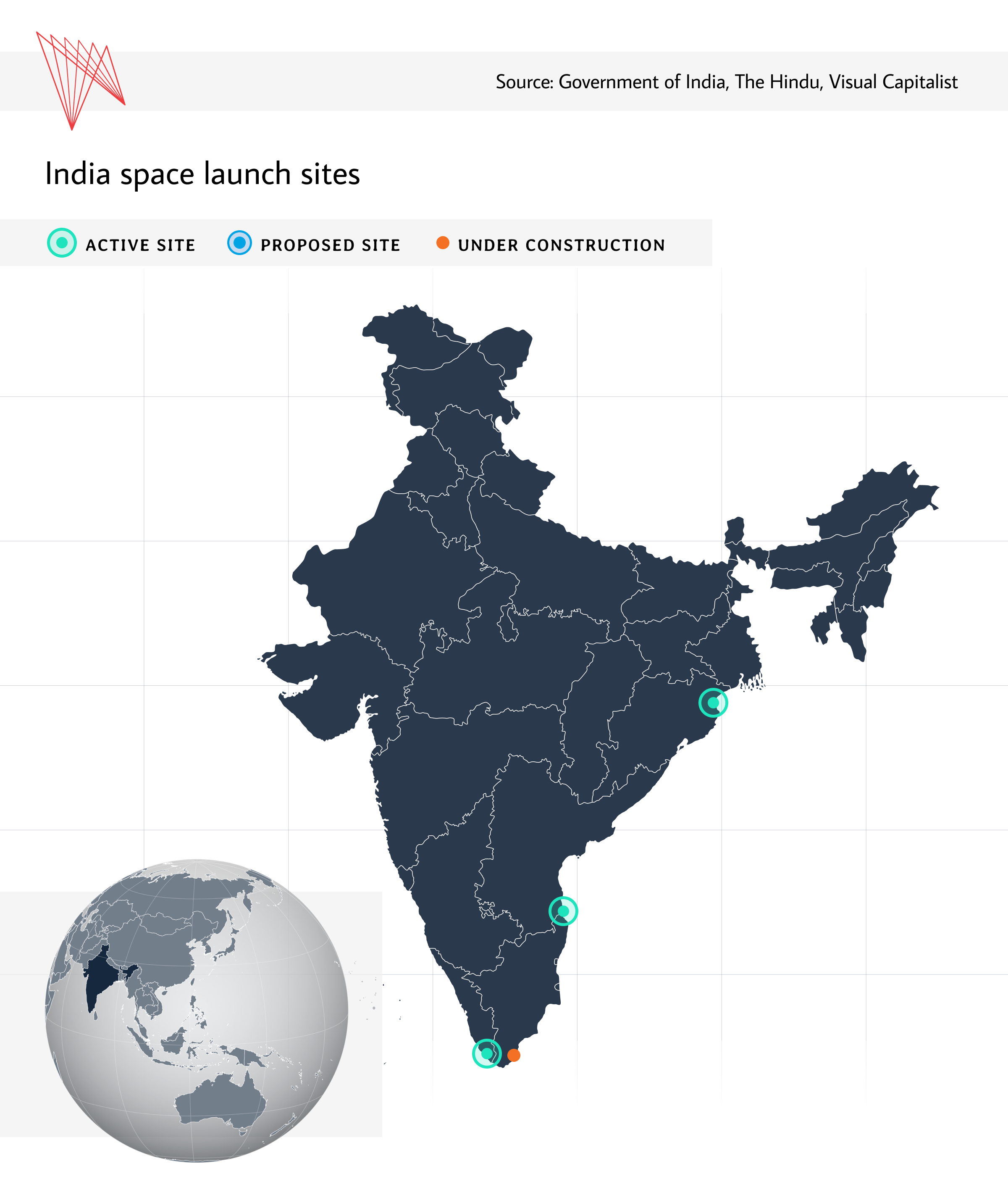
India constitutes two-to-three per cent of the global space economy and its share is projected to grow by 10 per cent by 2030, mainly through increasing demand for its spaceport launch sites and satellite services such as Earth observation and disaster management. In 2023, launching satellites for Europe and the U.S. alone generated C$664 million in revenue. Exploration for resources is yet another aspect of India’s space policy attracting private investment. In its 2023 Space Policy, India explicitly encouraged the country’s private entities to “engage in the commercial recovery of an asteroid resource or a space resource.” The race to the moon, Mars, and beyond is one of technological prowess, and the ability to secure space resources, such as water and lunar regolith, is essential to fuel longer exploratory missions, such as to Mars.
In recent years, there have been more private actors entering India’s space launch industry. India aims to quintuple its stake in the global launch market over the next decade. In 2022, GIC, Singapore’s sovereign fund, invested about C$69 million in Skyroot, an Indian space company that launched India’s first commercial rocket that same year. The investment gave GIC almost a 25 per cent stake in the startup. To further facilitate investments in its space sector, the Indian government approved in February 2024 an amendment to its Foreign Direct Investment (FDI) policy as part of Prime Minister Narendra Modi’s vision of an Atmanirbhar Bharat – a self-reliant India. The amendment would, among other things, further open up India's space sector for foreign participation.
Notable Space Companies in India:
Skyroot Aerospace
Dhruva Space
Agnikul Cosmos
Pixxel
Bellatrix Aerospace
India’s national budget allows for the creation of a large venture capital fund to increase its space program spending and encourage private sector investment in space research and innovation. The budget also supports other initiatives to encourage private-sector participation in the space industry, aligning with the government's vision of making India a global space power by 2030. This increased financial backing underscores India’s ambition not only to enhance its strategic capabilities in space but also to secure a prominent position in the burgeoning global space economy, capitalizing on its technological advancements and low-cost satellite launch services.
Alliances in space
In tandem with building up its self-reliance through its domestic space industry, India has been increasingly engaged in international space co-operation, fostering partnerships with other space agencies and research institutions. During Prime Minister Narendra Modi’s state visit to the U.S. in June 2023, it was announced that India became the 27th Signatory to the non-binding Artemis Accords.
43 countries are currently part of the Artemis Accords; among them Canada, Japan, and the U.S. were founding members. The Accords are a U.S.-led coalition seeking to build a set of norms guiding the peaceful exploration of deep space, buttressed by the Outer Space Treaty. The number of signatories to the Accords has been growing steadily since 2020. India, alongside South Korea and Singapore, have since joined the Accords.
India, which signed the Outer Space Treaty in 1967 and ratified it in 1982, has signed all five United Nations treaties on outer space, but has yet to ratify the Moon Agreement (India signed the Moon Agreement in 1982). It should be noted that India is the only one of the four countries that have landed on the moon to sign the Moon Agreement.
The Moon Agreement seeks to expand on Article II of the Outer Space Treaty’s provision on the appropriation of space resources, which states that “[o]uter space, including the moon and other celestial bodies, is not subject to national appropriation by claim of sovereignty, by means of occupation, or by any other means.” There are 18 parties to the Moon Agreement, notable exceptions being China, Russia, and the U.S. By contrast, the Artemis Accords seeks to regulate state and commercial activities on the moon. The tension between the Moon Agreement and the Artemis Accords primarily stems from Section 10. 2 of the Accords, which states that “Signatories affirm that the extraction of space resources does not inherently constitute national appropriation under Article II of the Outer Space Treaty.” The Accords seek to create norms based on the U.S. and its Artemis partners’ interpretation of the Outer Space Treaty on the exploitation of space resources, including those found on the moon. It remains to be seen whether India will continue as a signatory to the Moon Agreement, withdraw its signature, or, like Australia—another Artemis partner—ratify the treaty.
Aside from joining various multilateral initiatives, India has also deepened its bilateral ties on space, notably with the U.S., through joint workshops and the India-U.S. 2+2 Ministerial Dialogue, an annual diplomatic summit held with the foreign and defence ministers of each state. In 2023, the Joint Statement from the Dialogue acknowledged the various bilateral partnerships that have been developed, including the U.S.-India Civil Space Joint Working Group that seeks to develop their commercial space sectors. Taking the U.S.-India bilateral relations further, Indian astronauts began training with NASA for a joint mission to the International Space Station (ISS) in August 2024.
India also maintains close ties with Russia and collaborates with Russia on its space program. During Prime Minister Narendra Modi’s recent visit to Russia in July, both countries pledged to forge closer ties in space through their respective space agencies in areas including “human spaceflight programs, satellite navigation and planetary exploration.”
India has also been striking partnerships on space with its neighbours in the region. In June, through a “future-oriented partnership,” it pledged to collaborate with Bangladesh on space technology, which includes India building and launching a satellite for its neighbour. This partnership, which includes maritime security, is part of India’s larger effort to counter China’s influence in the region through its Indo-Pacific Oceans Initiative, which aims to build the region’s maritime security.
India has also been expanding its engagements in space-related mini and multilateral forums. In May 2023, as part of the Quadrilateral Security Dialogue (QUAD) efforts on Space Situational Awareness (SSA), which seeks to track orbital objects, India signed a Memorandum of Understanding (MoU) with the group’s other members – Australia, Japan, and the U.S. – affirming that they will not conduct anti-satellite tests (ASATs).
India’s Geopolitical Considerations in Space
In recent years, India walked a fine line balancing its strategic partnership with the U.S. while also deepening ties with Moscow and maintaining its “strategic autonomy.” The ongoing geopolitical rifts between the U.S. and the two major space powers – China and Russia – are serving to India’s advantage. In space, China, India, and Russia offer efficient yet low-cost technology. However, given the geopolitical tensions, the U.S. government is likely to work even more closely with India on space military technology. India’s reach in space is argued by some to be partly driven by China’s race to become a space superpower.
ASATs are a major threat in space as they have the potential to create a colossal volume of orbital debris, posing a risk to other satellites as well as the International Space Station. In 2019, just four years prior to signing the QUAD’s MoU, India conducted its own ASAT, demonstrating its capability to destroy a satellite in orbit. ISRO’s test came just over a decade after China’s 2007 ASAT test, which produced about 3,000 fragments and at a higher altitude. India’s actions triggered concern about the possibility of more space debris being generated from ASAT tests. The U.S. and Russia are the only other states that have successfully carried out such tests. The U.S., however, in 2022 declared a self-imposed ban. The UNGA, in December 2022, encouraged states to do the same. However, China and Russia opposed the resolution, and India abstained from voting on it.
A source of national pride
India has indigenously developed its space assets – from space launch facilities to rockets and satellites – and does so at a lower cost, making it a valuable actor in various aspects of space’s global supply chain. Under the stewardship of ISRO, India has showcased the country's state and private sector space capabilities. With a focus on self-reliance, cost-effective missions, and development benefits, India continues to push the boundaries of space technology and exploration. As interest in space resources grows, and given India’s success with its lunar missions, India is expected to play a pivotal role in cislunar regulation – both in space situational awareness as well as traffic management. Its leadership in global space governance is not surprising as the country aggressively pursues national-level policies to drive its space industry – one that is quickly becoming a source of national pride.
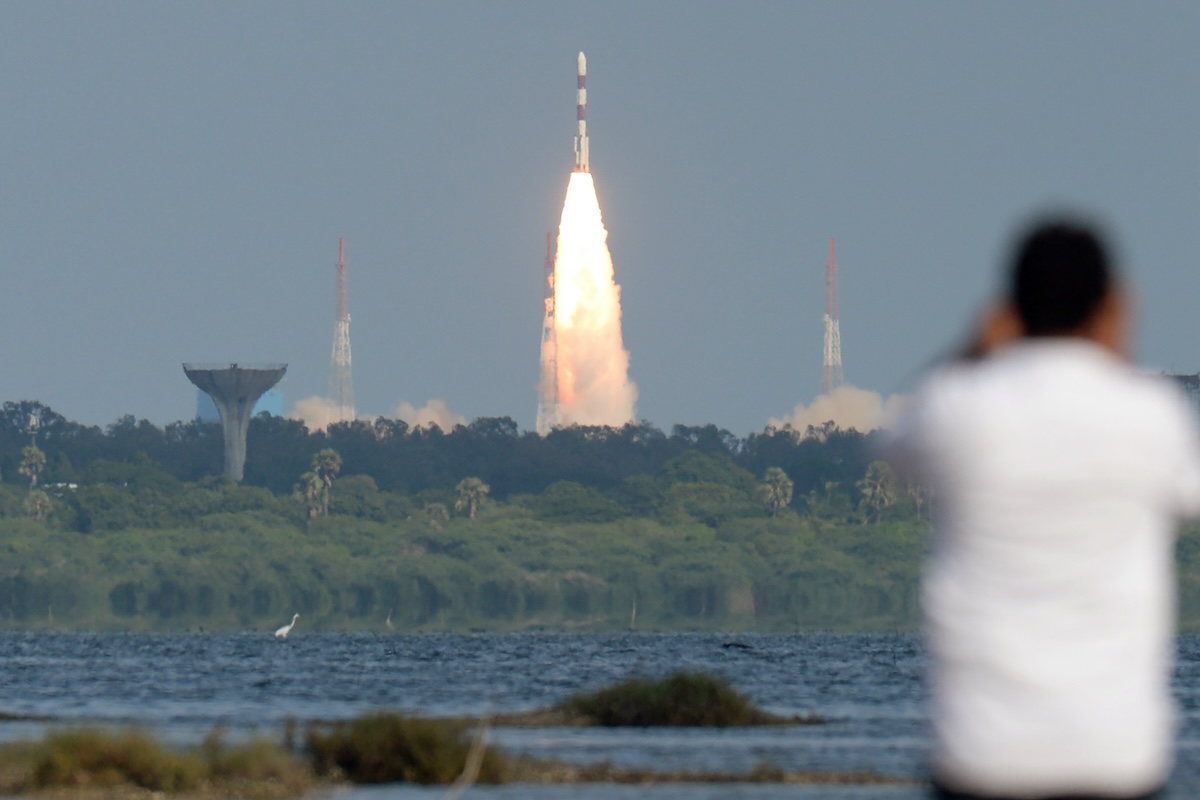
In the lead-up to the general elections held in the spring of 2024, space was emphasized by Modi’s Bharatiya Janata Party (BJP) as an area of technological prowess. The BJP’s manifesto explicitly links the growth of the nation and the ambitions of its youth to space. It promises to position India as a “leading space power” through its various missions, have an increasing role in the global space economy, and establish a space forum to assist the Global South in space technology. Space is increasingly integrated into the Modi government’s messaging that India is now a great power.
In 1963, India transported parts of its first rocket to the launch site on a bicycle; 60 years later, it is set to launch its first probe to study Venus, 250 million km away from Earth. Its space program has transformed from a nascent initiative into a robust and multifaceted enterprise, reflecting the nation’s socio-economic goals, defence strategies, and geopolitical ambitions. ISRO’s achievements, including the successful landing on the lunar south pole and the deployment of advanced satellites, showcase India's technological prowess while underlining its commitment to self-reliance and innovation. Furthermore, India's participation in international collaborations and commercial space activities highlights its growing influence in the global space community.
The strategic importance of India's space endeavours is underscored by its positioning between major spacefaring nations like the U.S., China, and Russia. By fostering a thriving commercial space sector and building strategic alliances, India is cementing its role as a key player in shaping the future of space exploration and governance. As India continues to invest in crewed missions and deep space exploration, its space program stands poised to contribute not only to national pride but also to the broader global space economy.
• Edited by Charles Labrecque, Director of Research, and Vina Nadjibulla, Vice-President Research & Strategy, APF Canada
Also in this series: For an overview of global and Asian space programs, please see the introduction to this series. Our earlier report focused on China, with future reports on Japan, South Korea, and Canada.
